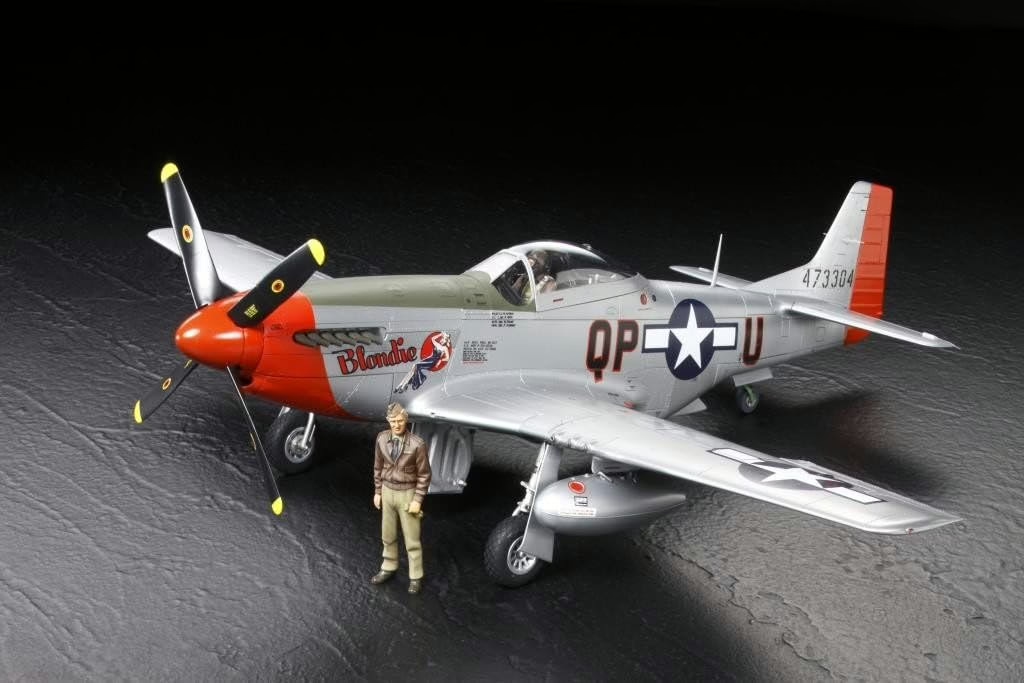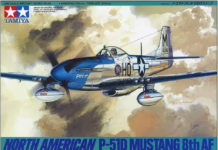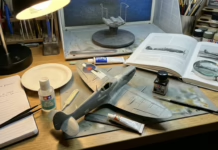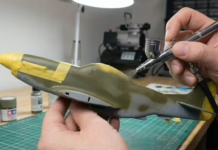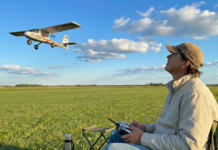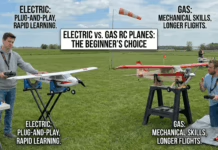Seventeen magnets, modular landing gear, and 550 perfectly fitting parts deliver the ultimate P-51D—if you can handle the complexity.
Kit: 60322 // Scale: 1/32 // Price: $165-$192
Manufacturer: Tamiya
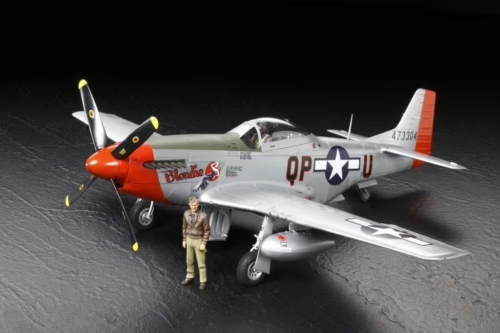
The hunt for the perfect 1/32 scale P-51D Mustang has spanned decades. We’ve wrestled with ill-fitting relics from the golden age of modeling and navigated ambitious but flawed releases from Dragon. What we’ve always needed was a kit combining historical accuracy with engineering that actually helps rather than hinders the build process. When Tamiya announced Kit No. 60322, the modeling community held its breath.
After 54 hours at the workbench and a part-by-part analysis, the verdict is clear: The Tamiya 1/32 P-51D Mustang represents a monumental achievement in scale model engineering. This isn’t just another P-51 kit—it’s a new benchmark that solves long-standing modeling challenges through brilliant design solutions. Many builders consider it one of the best plastic model kits ever made.
But let’s be direct: with 550 parts, state-of-the-art multimedia components, and a premium price tag, this kit demands an experienced hand. This review will give you the transparent evaluation you need to make a confident purchasing decision.
Engineering Solutions That Work
Tamiya’s approach to this kit centers on solving problems that have frustrated modelers for years. Three innovations stand out.
The Magnetic Cowling System: Seventeen magnets embedded in the engine and ultra-thin cowling panels create a revolutionary solution to an age-old dilemma. The cowlings snap into place with satisfying precision, achieving a seamless fit while allowing you to display the beautifully detailed Packard Merlin engine whenever you want. You’re no longer forced to choose between hiding detailed work forever or compromising the aircraft’s iconic lines with poorly fitting removable panels.
The engine itself is a model within the model. Tamiya provides an impressive reproduction featuring a detailed carburetor, supercharger, and intercoolers. The engine mount is intelligently molded as one piece with the fuselage, eliminating what could have been a nightmarish alignment process.
Build Options That Actually Matter: This kit functions as a Swiss Army knife of P-51D variants. The box includes parts for early-production or late-production aircraft: two tail types (with and without dorsal fin), three canopy options (including the Dallas Hood), two instrument panels, two seat types, and two exhaust configurations. Previously, depicting specific production blocks required expensive aftermarket resin sets. Tamiya gives you these options straight from the box.
The Modular Landing Gear: The main and tail gear assemblies are complete, swappable modules. Build the kit gear-down for display, or swap the modules for a gear-up in-flight pose on the included stand—even after final assembly. This clever engineering allows unprecedented display flexibility.
 The Trade-off
The Trade-off
This modularity comes with consequences. The gap around the tail wheel bay—consistently noted as a flaw—results directly from the swappable module design. It’s a minor issue, easily fixed with filler, but it’s the price paid for that modular feature.
Similarly, the movable control surfaces operate on a sophisticated system using 16 metal rods and photo-etched hinges. The engineering is brilliant, but the practical fit can be tricky. The flaps present particular challenges. Many experienced modelers skip the movable parts entirely, gluing surfaces in fixed positions for better, more stable results.
These aren’t mistakes—they’re deliberate design compromises. Tamiya prioritized interactive features and modularity over perfect static-pose fit. Understanding this philosophy helps you appreciate what the kit achieves and work around its minor limitations.
The Cockpit: Multiple Variants in One Box
The cockpit detail surpasses any plastic Mustang that preceded it. The sidewalls, instrument panel, and floor feature crisp, accurate, comprehensive detail. More importantly, this isn’t one cockpit—it’s multiple cockpits.
Tamiya provides a vast array of options: early and late-production seats, two instrument panels, and four rearview mirror types. This allows accurate depiction of specific P-51D production blocks without aftermarket upgrades. While some aftermarket sets may offer modest improvements, the out-of-box parts prove more than sufficient for a masterpiece build.
Airframe and Surface Detail
The surface detail is very delicate and refined. Tamiya correctly captured the famous wing profiles and includes a correct main landing gear well design—a detail many other kits get wrong. The beautifully detailed landing gear and detailed gun bays (complete with .50 caliber Brownings and ammunition belts) add to the impressive level of accuracy.
The fit quality lives up to Tamiya’s legendary reputation. The wing-to-fuselage join was superb, requiring no filler. Many builders report that putty isn’t required at all. The kit almost builds itself.
 The Wing Rivet Controversy
The Wing Rivet Controversy
Here’s where we must address the kit’s most significant historical compromise. The P-51D’s laminar flow wing was puttied and smoothed on the real aircraft to reduce drag. Tamiya chose to represent rivets on large portions of the wings that would have been smooth on actual aircraft. For a kit boasting utmost accuracy, this is a noteworthy deviation from reality.
You have three options: ignore it (the rivet detail is delicate and still looks excellent), fill the rivets with Mr. Surfacer 1200 and sand smooth (the purist’s solution requiring considerable work), or use several coats of primer to tone down the effect without extensive labor.
Materials and Components
The kit includes 106 photo-etched metal parts, which contribute to the detailed cockpit and movable surfaces but can present fit challenges. The solid rubber tires feature accurate tread patterns but suffer from seams that prove difficult to remove. Many modelers replace them with plastic or resin alternatives.
The kit decals are well-printed and opaque but remain a bit fragile and still look slightly thick—a long-standing Tamiya characteristic that can prevent them from settling properly into fine surface detail.
Assembly Experience
Despite the 550-part complexity, this kit is a joy to build. The precision engineering transforms what appears overly complex into a logical, deeply satisfying assembly process. The instructions are generally clear, though vague in certain areas. Tamiya put serious consideration into the sequence of events—deviate from the directions at your own risk.
Critical tip: Sort all non-plastic multimedia items (metal pins, magnets, screws, bolts, nuts) into labeled bags or divided containers before starting. This prevents hours of frustration and loss of tiny critical parts.
The build requires patience and organization. One builder spent nearly two months on completion. Our review build took 54 hours. This is not a weekend project.
The Instrument Panel Fix
The kit’s clear instrument panel “glass” is thick, and the decal applies to its back, creating an unrealistic, too-far-back appearance. Better solution: discard the clear part, cut out individual dial decals, apply them to the front of the gray instrument panel, and seal each dial with a drop of gloss coat. This looks much better.
Pros & Cons
Pros
Flawlessly Executed Engineering: The kit exemplifies Tamiya’s great engineering. The overall fit is so precise that many modelers report putty isn’t required at all. The wing-to-fuselage join requires no filler.
Outstanding Detail Level: The kit is stuffed full of detail. From the immensely better detailed cockpit to the beautifully detailed Packard Merlin engine and correct main landing gear well design, this creates a show-stopping masterpiece straight from the box.
Comprehensive Build Options: As the Swiss Army Knife of P-51D kits, the inclusion of multiple tails, canopies, seats, instrument panels, and drop tanks allows accurate depiction of numerous P-51D variants from a single box.
Exceptional Build Experience: Despite 550-part complexity, the kit almost builds itself and delivers a joyful building process. It’s widely considered one of the best plastic model kits ever made and the best all-round kit on the market.
Smart, Deluxe Features: Innovative magnet use for removable cowlings, swappable landing gear, and the 16-page full-color photographic reference manual make this a truly deluxe package.
Cons
Wing Rivet Inaccuracy: The kit’s single biggest con for historical purists. Tamiya chose to represent rivets on large portions of wings that would have been puttied and smoothed on actual aircraft for laminar flow. This is a deviance from reality in pursuit of visual effect.
Minor Fit Issues from Modularity: The tricky flap fit and gap around the tail wheel bay are consistent though minor complaints. Both result directly from the kit’s ambitious movable and modular design philosophy.
Solid Rubber Tires: While featuring accurate tread patterns, they suffer from seams that are difficult to remove. Many modelers prefer replacing them with plastic or resin wheels.
Thick Kit Decals: Though well-printed and opaque, they’re a bit fragile and still look slightly thick. This long-standing Tamiya drawback can prevent them from settling into fine surface detail.
Why You’ll Simply Love this Kit
The emotional payoff comes from the build experience itself. The engineering and fit of parts are so perfect that putty isn’t required at all. This super well-engineered kit takes what appears overly complex and transforms it into a logical, deeply satisfying assembly. You’ll love the tactile feeling of parts clicking together with precision that feels less like model-building and more like watchmaking.
You’ll love the insane level of detail you’re creating. As you assemble the multi-part cockpit with nice interior highlighting and build the full Merlin engine, you’ll feel immense accomplishment. This kit is stuffed full of detail, making the process—not just the result—intensely rewarding.
Finally, you’ll love the pride this model gives you. This kit builds into a show-stopping centerpiece. It’s not just a model—it’s truly a work of art. As one modeler exclaimed, it’s the kind of stuff you find in aviation museums in display cases. You’ll love this kit because the detailing and thought that Tamiya put into it makes you look and feel like a master modeler. It’s the ultimate P-51 in any scale, and having it on your shelf is a bases-loaded home run.
Pricing and Value
This is a premium, top-end-of-the-market kit. The MSRP ranges from $165 to $192, though hobby retailers sometimes offer lower prices around $163. As the kit has been available since 2011, occasional deals appear.
The critical question: Is the price justified? The research and community consensus provide a resounding yes.
Compare this to the budget alternative, the Revell Germany P-51D. The Revell kit aims at the cheap end of the market as a low-budget option with less detail and often no engine. The Tamiya kit’s high price reflects the level of detail and quality in the kit.
You’re not paying for just plastic—you’re paying for a much better build experience, a detailed engine, and an office (cockpit) that results in a model that will draw the eye in any display cabinet. The Tamiya kit is an investment in the experience of the build and a superior end result.
The consensus from modelers who made this investment is clear: “It was worth it… considering the detailing and thought that Tamiya put into this kit.”
Who Should Buy It
This kit isn’t for everyone. Understanding whether it’s right for you matters.
Ideal User Profiles
The “Masterpiece” Modeler: You want the single ultimate P-51 in any scale. You’re the modeler who says, “This is gonna really have to be my masterpiece.” You’re willing to spend the money and time (one builder spent nearly two months) to create a show-stopping centerpiece for your collection.
The “Engineering” Enthusiast: You love the build itself. You’ll applaud Tamiya for the complex but super well-engineered design. For you, assembling 550 perfectly fitting parts is the reward.
The P-51D Purist: You want to create a specific P-51D, such as “Little Eva III” or “Lil’ Aggie.” The kit’s vast array of options for tails, canopies, and cockpits makes it the perfect, most accurate base for depicting almost any P-51D production block.
Who Should Not Buy It
The Beginner: This must be stated clearly. This kit is not a simple kit to build. It’s officially rated for experienced modelers. A beginner will be overwhelmed by the 550 parts, multimedia components, and overly complex sub-assemblies.
The “Weekend” Builder: If you want a simple, fast project, this isn’t it. One builder noted it was a long while for a build. Our review build took 54 hours. This is a long-term, multi-week (or multi-month) project.
The Budget-Conscious Modeler: If price is your primary concern, Tamiya isn’t the brand for this build. A Revell kit will be a much better build experience for that low budget.
Before You Buy: Critical Considerations
Before committing to this investment, understand these factors affecting your build and purchasing decision.
The Wing Rivet Issue
For a kit boasting utmost accuracy, the riveted wings represent significant historical inaccuracy. The P-51D’s laminar flow wing was smooth on actual aircraft. Decide before you start whether you’ll ignore it, fill it (hard work), or use primer coats to minimize the effect (simpler method).
The Complex Build
Don’t confuse perfect fit with simple build. This kit is overly complex. It has 550 parts, including over 100 photo-etched pieces, 17 magnets, 10 fasteners, and 16 metal rods.
The instructions are dense, and sub-assemblies (engine, radiator, modular gear) are intricate. You must follow instructions closely. This isn’t a kit you can rush. It requires patience, organization, and an experienced skill set. The reward for this patience is a perfect fit, but the path is complex.
Building Tips
- Organization First: Sort all multimedia items into labeled containers before cutting any plastic. This is your first order of business and will save hours of frustration.
- Choose Your Path: Decide before starting whether you’re building out-of-box or adding aftermarket upgrades. Popular upgrades include fabric seatbelts (HGW microtextile or Web Garden), cockpit enhancements (BarracudaCast or QuintaModels), aftermarket decals (Zotz, Fundekals, or Kits World), and resin tires (Grey Matters or Barracuda).
- Instrument Panel Fix: Discard the thick clear part. Cut out individual dial decals and apply them to the front of the gray instrument panel. Seal each with a drop of gloss coat.
- Adding Fine Detail: The canopy guide rails on cockpit sills are missing their distinctive small holes. Scratch-build this detail using 10 x 20 thou card. Carefully mark and drill small holes with a 79 drill bit. This small touch is quite visible and adds high fidelity.
- Wing Rivet Filling: If you choose to fill the inaccurate wing rivets, use Mr. Surfacer 1200 thinned slightly, not thick Mr. Surfacer 500. Apply two coats to ensure filler gets into rivet holes. This allows you to sand the wing perfectly smooth for realistic silver paint finish.
- Follow Instructions: Tamiya put serious consideration into the sequence of events. Follow steps precisely. A known early gotcha appears on page 6: you must cut raised lugs off parts H7 and H8 for the engine assembly to fit correctly.
- Wheel Well Color: Instructions call for Zinc Chromate yellow. Many builders and historians argue that Interior Green is more accurate for this area, as most color pictures seem to have this color.
Final Verdict
The Tamiya 1/32 P-51D Mustang (60322) is, without exaggeration, a benchmark in plastic modeling history. It’s a flawlessly executed piece of great engineering that delivers an outstanding build experience and a show-stopping final product. Its minor flaws—the historical inaccuracy of wing rivets, thick kit decals, and finicky fit of optional moving parts—are well-documented, easily correctable, and do almost nothing to detract from the monumental achievement this kit represents.
This kit is an essential, must-build purchase for the experienced modeler who wants to build the single ultimate P-51 in any scale. If you have the slightest interest in the P-51 Mustang, do yourself a favor and build one soon.
Technical Specifications
| Specification | Details |
|---|---|
| Product Number | 60322 |
| Scale | 1/32 |
| Overall Length | 308mm (approx. 12.1 inches) |
| Overall Wingspan | 354mm (approx. 13.9 inches) |
| Construction Type | Assembly kit; requires glue and paint |
| Total Parts | 550 |
| Kit Materials | Injection-molded gray plastic, solid rubber tires, 106 photo-etched metal parts, 17 magnets, 16 metal rods, 10 fasteners, 10 vinyl polycaps |
| Key Features | Full Packard Merlin engine, removable magnetic cowlings, movable control surfaces, retractable/deployable landing gear (modular), 2 pilot figures (seated/standing), display stand |
| Included Options | 2 tail types (filleted/non-filleted), 3 canopy types, 2 instrument panels, 2 seats, 2 exhaust types |
| Decals | 3 U.S. 8th Air Force marking options |
| Included Extras | 16-page full-color photographic reference manual, canopy masks (self-adhesive, not pre-cut) |
FAQs
Q: Is the Tamiya 1/32 P-51D really that much better than the cheaper Revell kit?
A: Yes, they’re in completely different leagues. The price difference reflects the level of detail and quality. The Revell kit is a low-budget option with less detail and often no engine. The Tamiya kit is a top-end-of-the-market masterpiece, offering a much better build experience and a show-stopping final model.
Q: Can a beginner or intermediate modeler build this kit?
A: It’s not recommended. The kit is not a simple kit to build and is overly complex. With 550 parts, complex multimedia (PE, magnets, screws), and intricate sub-assemblies, it’s designed for experienced modelers.
Q: Do I have to fix the inaccurate wing rivets?
A: No. This is a personal choice. The rivet detail, while historically inaccurate, is very delicate and refined and still looks excellent. If you’re not a purist, you can ignore it and still have a stunning model.
Q: What are the essential aftermarket parts to buy for this kit?
A: “Essential” is a strong word, as the kit is outstanding right out of the box. However, the two most common and high-impact upgrades are new decals (to replace the thick kit-supplied ones) and fabric seatbelts (as the included photo-etched ones are flat and less realistic).
Q: What are the known fit issues?
A: The kit is famous for its perfect fit. The only consistently reported issues are a tricky flap fit and a gap around the tail wheel bay. Both are minor and result from the kit’s optional movable and modular parts.
Q: Does the kit include parts for the “Dallas Hood” canopy?
A: Yes. The kit includes 3 types of movable sliding canopies, one of which is the Dallas Hood higher-profile canopy, noted as part P1 in reviews.
Key Takeaways
- Revolutionary engineering solutions: Tamiya’s 17-magnet removable cowling system, modular landing gear, and comprehensive variant options solve long-standing modeling challenges while maintaining exceptional fit quality.
- 550 parts demand experience: This complex multimedia kit with photo-etched parts, magnets, and metal rods requires patience and organization—not recommended for beginners or weekend builders.
- Historical compromise on wing rivets: The kit depicts rivets on areas that were smooth on actual P-51Ds, requiring filling for purists but still looking excellent as-built.
- Premium investment justified: At $165-$192, the superior detail, build experience, and engineering precision far exceed budget alternatives, making it the definitive 1/32 scale P-51D.



